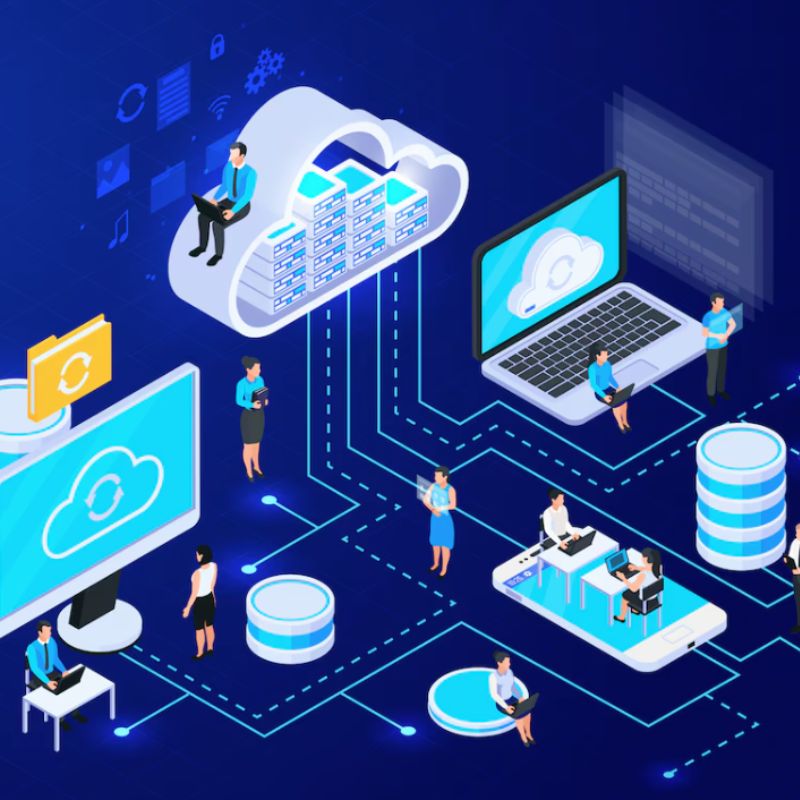
In today's digital age, businesses face increasing demands for flexibility, scalability, and efficiency in their IT infrastructure. Remote cloud computing offers a solution by providing access to computing resources, storage, and applications over the internet, without the need for on-premises hardware or infrastructure. At our remote cloud computing service, we specialize in delivering reliable and secure cloud solutions that empower businesses to streamline operations, enhance collaboration, and drive innovation. Let's explore how our remote cloud computing solutions can transform your business and propel you into the future of computing.
Understanding Remote Cloud Computing:
Remote cloud computing, also known as cloud computing or cloud services, refers to the delivery of computing resources, including servers, storage, databases, networking, software, and analytics, over the internet. These resources are hosted and managed by third-party cloud service providers, allowing businesses to access them on-demand, from anywhere in the world, via the internet. Remote cloud computing offers several key benefits, including cost savings, scalability, flexibility, and reliability, making it an ideal solution for businesses looking to modernize their IT infrastructure and embrace digital transformation.
Our Remote Cloud Computing Solutions:
At our remote cloud computing service, we offer a comprehensive suite of solutions designed to meet the diverse needs of businesses across industries. Our solutions include:
Infrastructure as a Service (IaaS):
IaaS provides businesses with access to virtualized computing resources, including virtual machines, storage, and networking, hosted in the cloud. With IaaS, businesses can deploy and manage virtual servers, storage, and networking infrastructure on-demand, without the need for physical hardware or infrastructure. This allows businesses to scale resources up or down as needed, pay only for what they use, and avoid the costs and complexities associated with managing on-premises infrastructure.
Platform as a Service (PaaS):
PaaS provides businesses with a platform for developing, deploying, and managing applications in the cloud. With PaaS, businesses can access a suite of development tools, middleware, and runtime environments, hosted in the cloud, to build, test, and deploy applications quickly and efficiently. PaaS eliminates the need for businesses to manage underlying infrastructure, allowing them to focus on application development and innovation.
Software as a Service (SaaS):
SaaS provides businesses with access to cloud-based software applications and services, hosted and managed by third-party providers. With SaaS, businesses can access a wide range of productivity tools, business applications, and collaboration platforms, such as email, CRM, ERP, and collaboration software, on a subscription basis. SaaS eliminates the need for businesses to install, maintain, and update software locally, reducing IT overhead and improving accessibility and usability for end-users.
Remote Desktop as a Service (RDaaS):
RDaaS provides businesses with access to virtual desktop environments hosted in the cloud. With RDaaS, businesses can provision and manage virtual desktops for employees, allowing them to access their desktop environments, applications, and data from anywhere, on any device, via the internet. RDaaS improves flexibility, mobility, and security for remote workers, while reducing the costs and complexities associated with managing traditional desktop environments.
Disaster Recovery as a Service (DRaaS):
DRaaS provides businesses with a cloud-based disaster recovery solution for protecting critical data and applications against data loss and downtime. With DRaaS, businesses can replicate their data and applications to cloud-based infrastructure, ensuring rapid recovery and continuity of operations in the event of a disaster or outage. DRaaS eliminates the need for businesses to invest in and maintain costly secondary data centers, providing a cost-effective and reliable solution for disaster recovery.

Key Benefits of Remote Cloud Computing:
Investing in remote cloud computing solutions offers several key benefits for businesses, including:
Cost Savings:
Remote cloud computing eliminates the need for businesses to invest in and maintain on-premises hardware, infrastructure, and software, reducing capital and operational expenses associated with IT.
Scalability:
Remote cloud computing allows businesses to scale computing resources up or down as needed, in real-time, to accommodate changing workloads, user demands, and business requirements.
Flexibility:
Remote cloud computing provides businesses with the flexibility to access computing resources, applications, and data from anywhere, at any time, on any device, via the internet, enabling remote work, mobility, and collaboration.
Reliability:
Remote cloud computing offers high availability, redundancy, and disaster recovery capabilities, ensuring that critical data and applications are accessible and protected against data loss and downtime.
Security:
Remote cloud computing providers implement robust security measures, including encryption, access controls, and threat detection, to protect data and applications against unauthorized access, data breaches, and cyber threats.
Innovation:
Remote cloud computing enables businesses to innovate and experiment with new technologies and solutions, such as artificial intelligence, machine learning, and Internet of Things (IoT), without the need for significant upfront investment or infrastructure.
Additional Features (Optional, at Extra Cost):
Additional Features (Optional, at Extra Cost):
Additional Features (Optional, at Extra Cost):